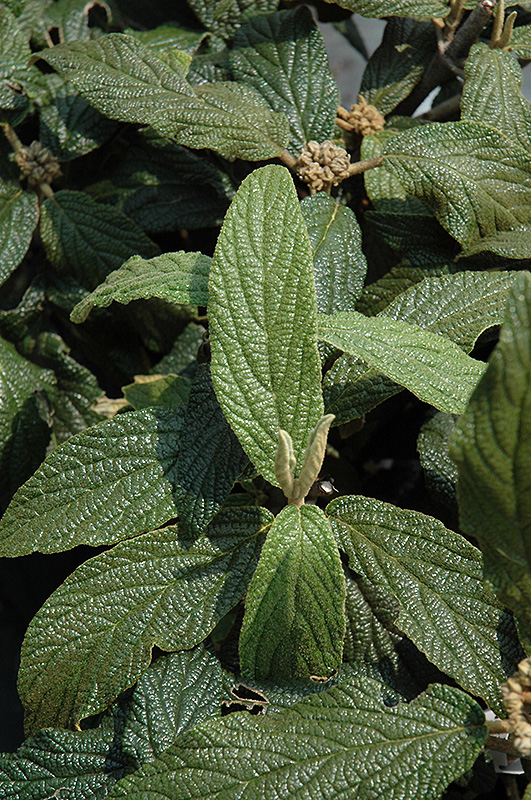>> Home
Cree Leatherleaf Viburnum
Viburnum rhytidophyllum 'Cree'
Height: 8 feet
Spread: 6 feet
Sunlight:
![]()
![]()
Hardiness Zone: 4b
Description:
A compact selection of the species, with showy clusters of fragrant white flowers in spring followed by brilliant red fruit in fall; leathery, evergreen foliage is blue-green and glossy; makes a great specimen or natural screen
Ornamental Features
Cree Leatherleaf Viburnum is blanketed in stunning fragrant white lacecap flowers held atop the branches in mid summer. The dark red fruits are held in abundance in spectacular clusters from late summer to late winter. It has bluish-green evergreen foliage. The glossy oval leaves remain bluish-green throughout the winter. The smooth gray bark adds an interesting dimension to the landscape.
Landscape Attributes
Cree Leatherleaf Viburnum is a multi-stemmed evergreen shrub with an upright spreading habit of growth. Its relatively coarse texture can be used to stand it apart from other landscape plants with finer foliage.
This is a relatively low maintenance shrub, and is best pruned in late winter once the threat of extreme cold has passed. It is a good choice for attracting birds to your yard, but is not particularly attractive to deer who tend to leave it alone in favor of tastier treats. It has no significant negative characteristics.
Cree Leatherleaf Viburnum is recommended for the following landscape applications;
- Accent
- Mass Planting
- Hedges/Screening
Planting & Growing
Cree Leatherleaf Viburnum will grow to be about 8 feet tall at maturity, with a spread of 6 feet. It has a low canopy with a typical clearance of 1 foot from the ground, and is suitable for planting under power lines. It grows at a slow rate, and under ideal conditions can be expected to live for 40 years or more.
This shrub does best in full sun to partial shade. It prefers to grow in average to moist conditions, and shouldn't be allowed to dry out. It is not particular as to soil type or pH. It is highly tolerant of urban pollution and will even thrive in inner city environments. This is a selected variety of a species not originally from North America.
